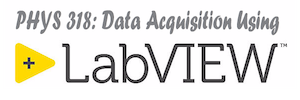This module revisits some methods to test a sensor or validate a measurement without writing any software. Hopefully you already know most of what is in this module but it is good to review these techniques anyway.
Access Using NI-DAQmx Course- MF: 2. Validating an Analog Input Measurement
In early versions of LabVIEW there was no such item as a Global Variable. To make up for this shortcoming users developed a pattern that became to be known as a LabVIEW 2 Style Global. It consisted of a while loop that would only run once, with a shift register that could store data between calls, and a case structure with cases for setting or retrieving a value. This pattern is no longer needed for a bare-bones global variable that can store a value and be used anywhere in a project, since global variables were introduced in LabVIEW 3. However, this pattern later developed into what is called an Action where added functionality dealing with the stored value was added. The following page explores Action Engines and is followed by a video that shows how to use an action engine to encapsulate the code for streaming data to a disk.
Today we will wrap up any lingering questions about Assignment A02 – Temperature Monitor and will move on to the next assignment, A03 – Thermostat, which will use a control technique called PID to set the temperature of a small thermal plant to a desired value, called a setpoint. In this assignment we will continue to build upon our use of basic design patterns by encapsulating code for the DAQ operations into subVIs called Action Engines.



